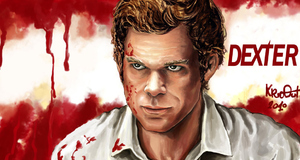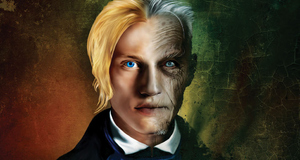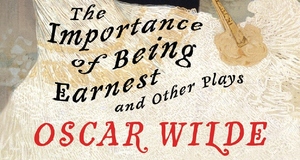A Duet for Christ and Dionysus:Tragedy in the Ideas of Friedrich Nietzsche and Oscar Wilde
By
2015, Vol. 7 No. 08 | pg. 1/4 | »
IN THIS ARTICLE
KEYWORDS
One Victorian writer whose similarities to Nietzsche continue to receive sustained attention is Oscar Wilde—even though, as is the case with most of Nietzsche’s English-speaking contemporaries, they probably never read one another (Allen, 2006, p. 386). Thomas Mann (1959) first compared Nietzsche and Wilde in an essay that aligns them as co-conspirators in the early wave of head-on assaults upon the “hypocritical morality of the middle-class Victorian age” (p. 157). As Mann observes, Nietzsche and Wilde contemplate the individual as an aesthetic project, undertaken against the swollen Victorian tendency towards a conformity that they both equally despise. Although Mann concludes that they “belong together as rebels, rebels in the name of beauty,” each for granting aesthetics pride of place in their philosophies, he passes the final verdict that there is “something almost sacrilegious about discussing Wilde, ‘a dandy,’ alongside Nietzsche, ‘the German philosopher’” (p.158). They "belong together as rebels, rebels in the name of beauty." Mann’s (1959) reservations, stemming from the German modernist’s disciple-like reverence towards Nietzsche, did not discourage other scholars from addressing their relationship of ideas. Even before Mann, Max Nordau in 1892 paired them together in his pseudo-scientific work Entartung (Degeneration), in which he claims that the mental deterioration of Nietzsche and Wilde during their last decades of life is the consequence of their shared hyper-individualism (as cited in Allen, 2006, p. 387). In his survey work on Nietzsche’s reception in Britain, David Thatcher (1970) claims that they are vastly different.For Nietzsche, art is essential to the virility of the human as a natural being, a medium for affirming his or her sense of belonging to nature; for the decadent Wilde, art is sheer artifice, the striking of an outlandish pose, a means to freedom from the deterministically natural self by manufacturing an unnatural one to outshine it (pp. 167-168). Certainly, Nietzsche (1990) reviles Wilde’s “art for art’s sake” aestheticism, writing in Twilight of the Idols that “[a]rt is the great stimulus to life: how could it be thought purposeless, aimless, l'art pour l'art?” (p. 93). Recent scholarship, however, sides more with Mann (1959) in drawing Nietzsche and Wilde together on account of the ubiquity of aesthetics in their philosophies. In his 2006 article, James Allen develops on Mann’s comparison to discuss Nietzsche and Wilde together as immoralists who “delighted in turning morality on its head, telling us that the modern idea of good is actually bad, and the modern idea of bad is probably good” (p. 392). Kate Hext (2011) focuses less on their immoralism and more on the theme of individualism as an act of artistic self-creation. “The Romantic Individuals of Wilde and Nietzsche,” she writes, “are created through art and aesthetic principles of self-becoming and exemplified by the recreations of philosophical-literary form and style which, in their works, effectively bring the reader into being as a creative subject” (p. 204). Hext focuses her argument on Nietzsche’s and Wilde’s depictions of Jesus Christ as a poet in their later works, establishing her argument that both Nietzsche and Wilde treat the artist as a figure of divinity-like status. “Given the breadth of works and ideas considered here,” she concludes her overview, “it has been necessary to skim over the surface of several significant issues that would benefit much from further work” (p. 216). This article responds to Hext’s (2011) call for “further work” by exploring the deeper tragic connection between the ideas of Nietzsche and Wilde that reveals itself through the dialogical comparison of mainly two important texts, Nietzsche’s (2000a) The Birth of Tragedy and Oscar Wilde’s (1996) De Profundis. Hext’s article precludes The Birth of Tragedy from her comparison of Nietzsche and Wilde on her assumption that “[t]o speak of similarities between Wilde and Nietzsche is really to speak of the similarities between their later works, when each departed from the essay to more experimental forms and focused their attentions on the concept of the individual” (p. 203). She argues that the Nietzsche who wrote The Birth of Tragedy is closer to Walter Pater, whereas the Nietzsche who wrote The Antichrist is closer to Wilde (p. 203). While The Birth of Tragedy is a flawed book, convoluted by the rhetorical relishes of an amateur student of Dionysus, as Nietzsche himself admits in his Attempt at Self-Criticism which prefaces the later 1886 edition, it effectively depicts the tragic worldview which Nietzsche adopts from the Pre-Socratic Greek tragedians and which underlies his entire philosophy. As Mann (1959) writes, Nietzsche never truly ceases to be a disciple of the great pessimistic philosopher Arthur Schopenhauer (p. 151). Nietzsche’s tragic worldview is often overwhelmed in his later works by his glorification of individualism, which has served as the main point of comparison to Wilde in scholarship up until now. A letter Wilde (1996) wrote to his lover, Lord Alfred Douglas, during his two-year sentence in Reading Gaol for sodomy, De Profundis is Wilde’s most neglected work. In the first half of the epistle, Wilde recounts the course of his relationship with Douglas, and in the second half he explains his spiritual rebirth as an artist in the image of Christ. According to Josephine Guy and Ian Small (2006), De Profundis is difficult to approach because of its textual inconsistencies, problematic publication history, as well as its incongruity to the decadent spirit of Wilde’s most iconic works (p. 123). However, as Lawrence Danson (1997) observes, “[f]or some readers, De Profundis is [Wilde’s] greatest work because it is the one in which he realized for the first time in his life the vital importance of being earnest” (pp. 92-93). One such reader is Regenia Gagnier (1997), who claims that De Profundis is “perhaps his greatest work of art” (p. 27). Thatcher (1970) correctly refutes the connection between Nietzsche and Wilde at the pinnacle of his career and celebrity, although he does not account for Wilde’s radical intellectual shift which took place behind the walls of Reading Gaol. Deprived of audience and agency in the world, the formerly whimsical and irreverent Wilde abandoned all pretenses of artifice when he wrote De Profundis to come to sincere terms with his tragic fate. In other words, Wilde abandoned l’art pour l’art, and turned instead to crafting a theory of art that addressed his real experience of suffering through the lens of classical tragedy. W.H. Auden (1964) writes, “Wilde’s life was like a drama, and in reading his letters chronologically there is an excitement similar to that of watching a Greek tragedy in which the audience knows what is going to happen but the hero does not” (p. 5). Auden’s (1964) assessment of Wilde’s biography may also be applied to that of Nietzsche, who spent the last decade of his life rendered comatose, as many critics have written with an air of occultism, by his fatal foretelling of the destiny of man. “And yet the more or less sought-after martyrdom at the end of Wilde’s life—Reading Gaol—adds to [Wilde’s] dandyism a touch of sanctity which would have roused Nietzsche’s full sympathy,” (p. 158) writes Mann (1959). Sander Gilman (2001), who has authored books on both Nietzsche and Wilde, compares the narratives, or perhaps legends, that have developed surrounding their deaths. Both writers/thinkers died in 1900, on the cusp of the modern era, likely from syphilis; many scholars romanticize these circumstances as the poetic consequences of living aesthetic lives detached from moral concern. Nietzsche and Wilde suffered prodigiously from a sense of alienation from their societies during their lifetimes—indeed, both of them were masters of self-pity—Nietzsche, whose strong stance against Christian morality barred him from participation in German academia, and Wilde, whose homosexuality stigmatized him as a sodomite even before his public humiliation during the trial which landed him in Reading Gaol. From tragedy they formulated philosophies for living, and their lives have subsequently been narrated as tragedies—as best exemplified, perhaps, by Mann’s (1953) allegorical retelling of Nietzsche’s life in his novel Doktor Faustus. Although Nietzsche (2000a) wrote the Birth of Tragedy at the daybreak of his career and Wilde (1996) wrote De Profundis towards the twilight of his own, these periods for each of them were ones of spiritual and intellectual reinvention. Writing from such states, they address similar topics, particularly suffering and its expression in the high art form of tragedy, which provide each of them with contexts for understanding and depicting their respective visions of artistic rebirth. In De Profundis, Wilde fashions himself as a tragic hero modeled after Christ, bestowed with the revelation the tragic hero receives only at the climax of his downfall—and thereby, Wilde witnesses his life unfold before him as a tragedy. Nietzsche writes from within a similar paradigm in The Birth of Tragedy, the work which defines his mission as a philosopher to resurrect tragic art from the aesthetic grave of Socratic philosophy. In this article, I argue that Nietzsche and the late Wilde both present tragic art as the project of creating a community of whole individuals sharing in suffering as an aesthetic experience, and thus triumphing over the pessimism that is the inevitable repercussion of a decadent conformist-culture.Continued on Next Page » Suggested Reading from Inquiries Journal
Inquiries Journal provides undergraduate and graduate students around the world a platform for the wide dissemination of academic work over a range of core disciplines. Representing the work of students from hundreds of institutions around the globe, Inquiries Journal's large database of academic articles is completely free. Learn more | Blog | Submit Latest in Literature |


















